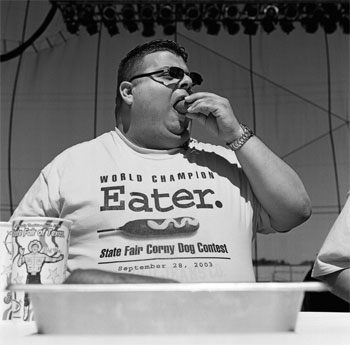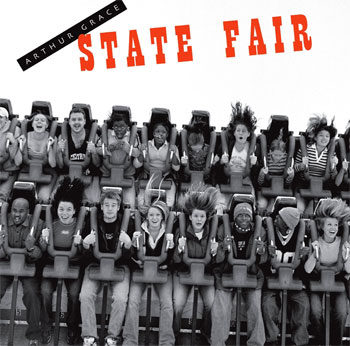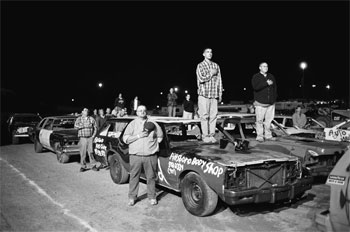 |
→ July 2006 Contents → Feature
|
State Fair
July 2006 |
 |
|||||||||
|
"I couldn't help thinking that if aliens ever landed on earth and you only had a few hours to help them understand America, all you would have to do is take them to any state fair. For me, they are a microcosm of America--in all its glory and weirdness--at any given point in time." --Arthur Grace
Arthur Grace began working as a photojournalist at United Press International in 1972. For the next year, he covered sectarian violence in Northern Ireland, drought in West Africa, and the 1973 Mideast War. Boston school busing and school desegregation were among his major stories for The New York Times in 1974 and 1975. At Time magazine from 1978 to 1985, he was assigned to the Carter Administration; photographed life in Eastern Europe, Russia, and Mongolia; martial law in Poland; the U.S. invasion of Grenada; Geraldine Ferraro's vice-presidential campaign, and the 1984 Los Angeles Olympics. From 1986 to 1990 as a staff photographer for Newsweek, he photographed cover stories on Mario Cuomo, Robin Williams, Judge Robert Bork, Michael Dukakis, Pope John Paul II and drug czar William Bennett. His major news stories for Newsweek included the Challenger space shuttle disaster in 1986, Pope John Paul's visit to Poland in 1987, and the Reagan-Gorbachev summit in Moscow. He also produced special black-and-white photo essays on San Francisco street kids, child poverty, and life in Poland. His portraits of candidates who ran in the 1988 presidential election were published in the Newsweek book entitled Choose Me.
Acquisition of the Arthur Grace Photographic Archive is part of the Center's initiative to locate, acquire, and make available for research archival collections that document the historical development of the news media in the U.S. (http://www.cah.utexas.edu/guides/media.html). This extensive archive includes the collections of renowned photojournalists Flip Schulke, Diana Walker, David Hume Kennerly, Dirck Halstead, and Wally McNamee, whose images have captured important national and international newsmakers and events.
Grace traveled to fairs throughout the heartland -- Texas, California, Colorado, Florida, Indiana, Kansas, Minnesota, North Carolina, Ohio, and Virginia -- documenting Middle America at play, but serious about competition. He captured such subjects as prize-winning pigs, sheep and cattle; contests for eating corn dogs and sacking groceries; beauty queens and drum majorettes; marching bands; gravity-defying midway rides; miracle machines for back pain, and demolition derbies. Throughout the project, he worked with Twin Lens Rolleiflex and Leica M rangefinder film cameras, but also shot digital with a Leica Digilux 2, completing the work in 2004. His choice of black and white emphasizes the composition and content of his images. From the thousands of photographs he shot to capture this ritual, 96 were chosen for the publication of State Fair. The book is part of the Center's Focus on American History series edited by Dr. Carleton and published in cooperation with the University of Texas Press.
An exhibition of 35 black-and-white photos from the book opened in May at the Center's Research and Collections Division (http://www.cah.utexas.edu/news/gracex.html) and will remain on display through August 31.
The book, State Fair, is available for purchase through the University of Texas Press (http://www.utexas.edu/utpress/books/grasta.html) (1-800-252-3206) and at online and national bookstores.
© Alison Beck
|
||||||||||
Back to July 2006 Contents
|
|


